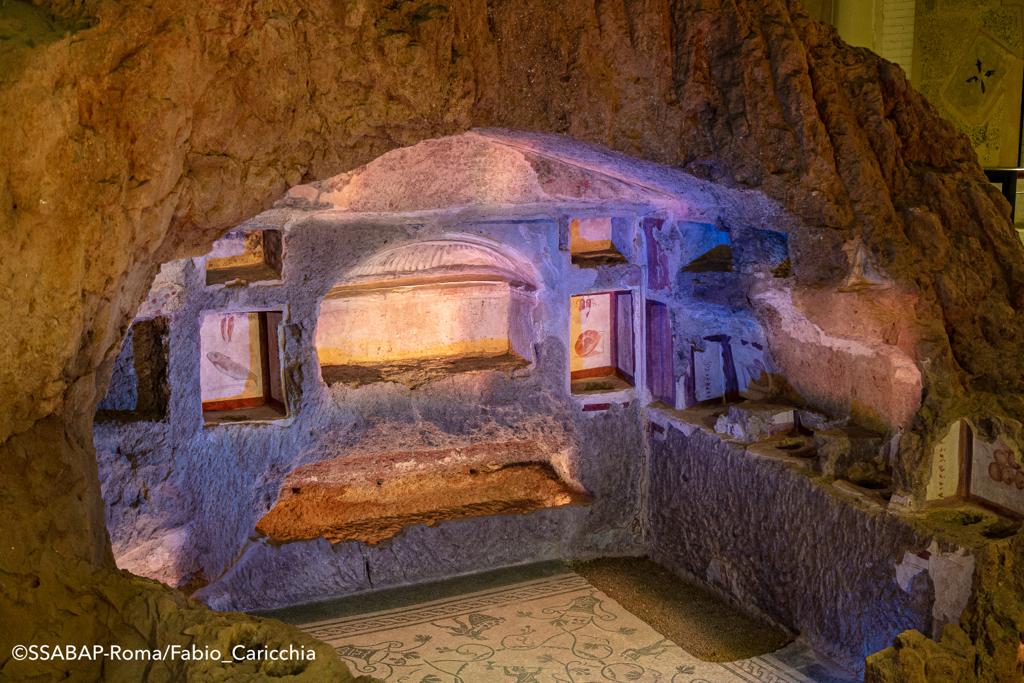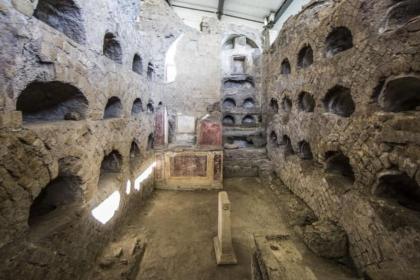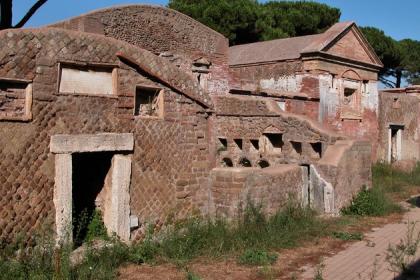
The Drugstore Museum and the Necropoli Portuense Circuit are divided into a territorial route in the historical outskirts of the Western quadrant of the city of Rome.
The fulcrum of the cultural itinerary is represented by the Drugstore Museum which, due to its history, presents itself as a place of contamination between ancient and modern with a vocation for the valorisation of contemporary material and immaterial culture, through applied arts, design, the industrial productions of the 20th century and the ethno-anthropological heritage. The Drugstore Museum is located on the commercial floor of the building at 317 Via Portuense. When the palace was built in 1967, some imperial tombs from the Portuense necropolis were found, which it was decided to keep incorporated in the basement of the building. In the 1980s the monuments were the subject of an initial attempt at valorisation, integrating them into what was the first drugstore in Italy. When the Drugstore went bankrupt in the 1990s, the necropolis became inaccessible again until 2005, when an agreement was signed with the Archaeological Superintendency of Rome to transform the area into a state-owned museum. Between 2006 and 2015, important restorations and functional adjustments to the structure were carried out. At the end of December 2019, with an emergency intervention, SSABAP-RM restored full functionality of the museum.
Within land owned by Eni, i.e. in the area of the former Purfina Refinery, thanks to the excavations of the Archaeological Superintendency of Rome conducted in the early 1980s, the Archaeological Area called "Pozzo Pantaleo” (“Pantaleo Well”) has re-emerged in which highlights a paved stretch of the via Campana overlooked by tombs, accommodation facilities and hydraulic structures, dating back to between the late Republican age and the late ancient age. In recent years, a positive synergy has developed between the Special Superintendence of Rome and Eni: in conjunction with the environmental remediation project across the entire area started by Eni at the beginning of 2020, a program was activated for the restoration of the decorum of the area, for assistance during the reclamation work and analysis and consolidation interventions preparatory to the conservation of the remains and for the evaluation of any new valorization strategies.
The Necropolis of Vigna Pia at the Casale di Vigna Pia is located within the gardens of the Casale now used as a restaurant on the basis of a concession from the Municipality of Rome, owner of the property, another section of the Portuense Necropolis has been excavated and displayed in an open-air museum, with funerary monuments of I-IIIrd century AD. The area is equipped with a pool for the educational simulation of excavations for children.
The Tomb of the Heron - via Ravizza was found in 1966 during construction works on a building in via Giuseppe Ravizza at the corner of via Giovanni Caselli, in the area of the former Purfina refinery. The space of the room, with a rectangular plan, was occupied by the depositions with niches on the walls, intended for the typical walled ollas for the cremated. The entire room, as well as the slightly vaulted ceiling, are covered with a layer of white plaster on which there are bands of bright red, green and yellow. In the spaces thus defined, decorative motifs such as birds, fruit baskets, flowers, garlands, marine animals and still lifes are inserted, all elements with a symbolic content linked to the funerary repertoire.
Photo credits: by Fabio Caricchia - Drugstore Museum, burial chamber, Special Superintendency of Rome
Necropoli Ostiense (Sepolcreto Ostiense)

 Condividi
Condividi
St. Peter’s Tomb, Vatican Necropolis (pre-Constantinian) and Constantinian Basilica

 Condividi
Condividi
Necropolis of Porto on the Isola Sacra

 Condividi
Condividi
Information
Open every day from 10 to 19
For updates please visit www.soprintendenzaspecialeroma.it/schede/drugstore-museum-e-circuito-necropoli-portuense_3249/.
 Condividi
Condividi
Location
To find out about all accessibility services, visit the Rome accessible section.











































